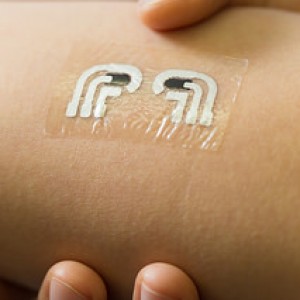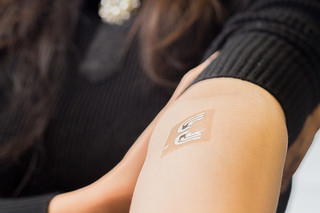
A temporary tattoo innovatively designed to extract and measure the levels of glucose in the fluid stored in between skin cells has been tested by nanoengineers at the University of California, San Diego. This is the first-ever example of the easy-to-wear and flexible device, and could be a huge step towards noninvasive glucose testing for patients living with diabetes. This study was published in the journal Analytical Chemistry and is titled, “Tattoo-Based Noninvasive Glucose Monitoring: A Proof-of-Concept Study.”
The device was developed and then tested by Amay Bandodkar, a graduate student, and colleagues at the NanoEngineering Department and the Center for Wearable Sensors at the Jacobs School of Engineering at UC San Diego. According to Bandodkar, this sort of sensor could also be used for other purposes such as delivering medicines through the skin or detecting other important metabolites existent in the body.
As of today, the tattoo still cannot provide accurate numerical measures that could allow patients to monitor and manage their own glucose levels; however, this is being advanced by computer and electrical engineers at the Center for Wearable Sensors. “The readout instrument will also eventually have Bluetooth capabilities to send this information directly to the patient’s doctor in real-time or store data in the cloud,” said Bandodkar.
Further, researchers are also interested in making the tattoo last for longer periods without raising its overall costs. “Presently the tattoo sensor can easily survive for a day. These are extremely inexpensive–a few cents–and hence can be replaced without much financial burden on the patient,” he said.
This approach would allow researchers to collect data that would prove essential for research, could be crucial for more effective prevention and, at the same time, offers a more comfortable procedure for diabetic patients monitor their condition. The device works with a really mild electrical current that is discharged into the skin for about 10 minutes forcing sodium ions existing in the fluid between skin cells to move toward the tattoo’s electrodes; this allows to calculate the overall levels of glucose.
“The concentration of glucose extracted by the non-invasive tattoo device is almost hundred times lower than the corresponding level in the human blood. Thus we had to develop a highly sensitive glucose sensor that could detect such low levels of glucose with high selectivity,” Bandodkar noted.


